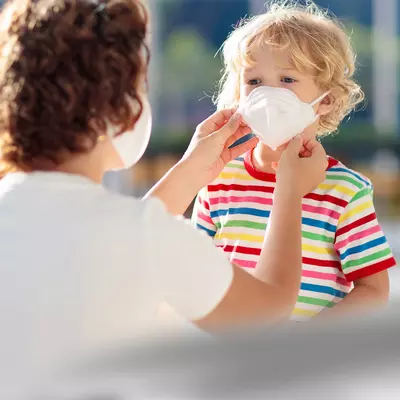- AdventHealth

The Straight Truth About Scoliosis
For decades, virtually every schoolchild in America has passed through the same nurses' office ritual.
The child leans forward at the waist, and the nurse looks for a bulge in the child's rib cage that indicates their spine is bent to one side.
They're looking for scoliosis, a curvature of the spine. They're screening for the illness in school-age children partly because that's when their growing bones reveal the condition.
Critically, though, that's also when scoliosis can be stopped from progressing to the point where surgery is necessary. Though scoliosis does not shorten one's life, it can be painful and affect children's emotional well-being.
One study of teen scoliosis patients found they were concerned about their relations with peers and abnormal development and had more frequent suicidal thoughts.
But if scoliosis is spotted early, these mental and physical problems can be lessened or sidestepped. Effective, non-surgical treatments like orthopedic braces can realign the spine.
In addition to their expertise in treating scoliosis, our physicians know teens can be concerned about their appearance. That's why we pay attention to our patient's emotional and spiritual well-being when we're caring for kids, not just their spines.
What Causes Scoliosis?
Affecting about three percent of children under the age of 16, scoliosis is the most common spine condition in young people.
Most cases are what doctors call idiopathic, which means they don't know what the cause is. In other words, you can't blame yourself if your child has scoliosis. There is no known way to prevent the illness.
However, there does appear to be a genetic component; if a child has scoliosis, his or her siblings are more likely to have it, too.
A relatively small number of cases develop in the womb and are sometimes discovered during a routine ultrasound. This type of scoliosis is likelier to progress and is more often treated with surgery.
Spotting Scoliosis
Parents, you don't have to wait for the nurse to screen your child for scoliosis, which typically becomes evident between the ages of 10 and 15. Common signs include uneven shoulders, waist or hip as well as a shoulder blade that sticks out.
The condition is often spotted in the summer when kids are playing outside with their shirts off.
It's important not to be confused by misinformation about scoliosis. Parents, you don't have to worry that scoliosis caused by an overweight backpack. Though overloaded backpacks can lead to muscle strain, they do not cause scoliosis. Nor will good posture in childhood prevent scoliosis.
Though scoliosis in children and teens is rarely painful, it can cause young people to become self-conscious about their appearance. We know that taking these mental and emotional concerns seriously is part of treating scoliosis.
What Can I Expect?
If your child has the signs of scoliosis, you want to visit a spine specialist. At the appointment, they'll start by taking X-rays of your child's spine to measure the angle of the curve. This is called the Cobb angle, and its an important way to describe how severe the scoliosis is, and how likely it is to get worse.
If the curvature is mild, it is often monitored closely the wait-and-see approach. That's because most cases of scoliosis don't get worse over time.
Though scoliosis forms at the same rate in girls and boys, girls are at much higher risk of the curve becoming severe enough to require treatment.
In cases where the spine needs to be directed to develop in a more normal position, a brace is used. But to work properly, a brace has to be applied early, which is a major reason why early detection is so important.
Finally, surgery is needed for curves that appear likely to persist into adulthood. It is an effective treatment, but we know that doesn't mean it's not stressful for both child and parent alike.
Our team can guide families through the mental side effects of scoliosis alongside the physical treatments. Kids worry about fitting in, parents worry about their child's future and we're experts at bringing peace of mind to both.
For more information, visit our website.



